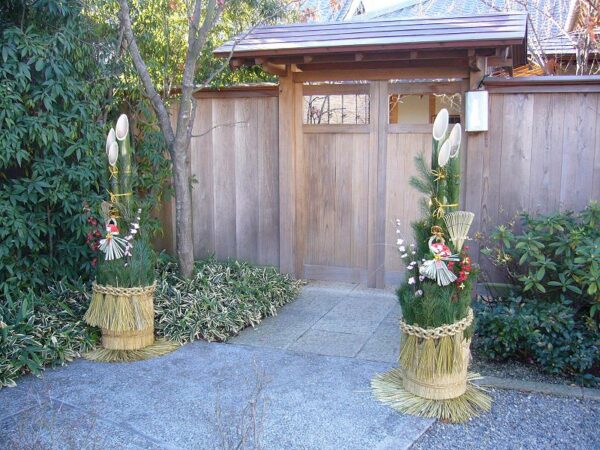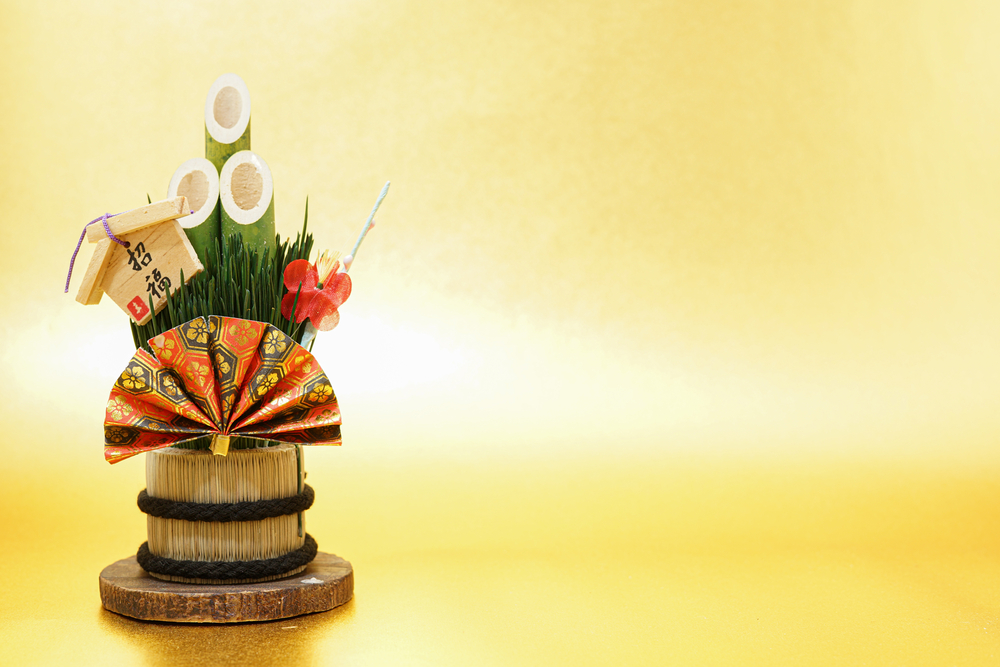If you are interested in learning more about Japanese culture, the kadomatsu is a fascinating tradition that is worth exploring. A kadomatsu is a decorative gate or doorway ornament made of bamboo and pine, and it is traditionally displayed during the New Year’s holiday in Japan. The kadomatsu is believed to bring good fortune and prosperity, and is an important symbol of the New Year.
Contents
The History and Meaning of the Kadomatsu
The kadomatsu has a long history in Japan, with the first recorded mention dating back to the 8th century. It is believed to have originated as a way to honor the Shinto gods and bring good luck to the household. The bamboo and pine branches used to create the kadomatsu are symbols of endurance and strength, and are believed to ward off evil spirits and bring good fortune.
In addition to being a symbol of good luck, the kadomatsu is also a symbol of the New Year and the start of a new cycle. It is traditionally displayed at the entrance of homes and businesses, and is a common sight during the New Year’s holiday season in Japan.
The Materials and Construction of the Kadomatsu
The kadomatsu is made of bamboo and pine branches, and is typically constructed in a triangular shape. The bamboo represents strength and endurance, while the pine represents long life and good fortune. The kadomatsu is often adorned with other decorative elements, such as paper lanterns or pine cones, to add to its beauty and symbolism.
In order to create a kadomatsu, the bamboo and pine branches are carefully selected and arranged in a triangular shape. The branches are then bound together with twine or wire, and the finished kadomatsu is placed at the entrance of the home or business.

The Role of the Kadomatsu in Japanese Culture
The kadomatsu is an important symbol in Japanese culture, and is closely tied to the New Year’s holiday. It is traditionally displayed at the entrance of homes and businesses from December 28th until January 7th, and is often accompanied by other New Year’s decorations such as kagami-mochi (a ceremonial rice cake) and shime-kazari (a decorative rope).
In addition to being a symbol of good luck and prosperity, the kadomatsu is also an important part of the New Year’s celebrations in Japan. It is a common sight during this time of year, and is often the subject of New Year’s cards and other holiday-themed decorations.
How to Create Your Own Kadomatsu
If you are interested in creating your own kadomatsu, there are a few simple steps you can follow. First, gather some bamboo and pine branches and arrange them in a triangular shape. You can use twine or wire to bind the branches together, and you can add decorative elements such as paper lanterns or pine cones if desired.
To create a more traditional kadomatsu, you may want to use specific types of bamboo and pine that are traditionally used in the construction of these ornaments. You can find these materials at specialty stores or online retailers, or you may be able to gather them from local forests or gardens.
Where to Find Kadomatsu in Japan
If you are planning a trip to Japan and want to see kadomatsu in person, you will have plenty of opportunities to do so. The kadomatsu is a common sight during the New Year’s holiday season, and can be found at the entrances of homes and businesses throughout the country. You may also be able to find kadomatsu for sale at specialty stores or markets, or you can purchase them online from retailers that specialize in Japanese crafts and decorations.
In addition to traditional kadomatsu made of bamboo and pine, you may also come across variations made with other materials such as paper or plastic. These modern versions are often easier to find and may be more affordable, but they may not have the same cultural significance as traditional kadomatsu made with natural materials.
Overall, the kadomatsu is a fascinating and important tradition in Japanese culture, and is a great way to learn more about the country’s customs and beliefs. Whether you create your own kadomatsu or simply admire them during your travels, they are sure to add a touch of good luck and prosperity to any occasion. So, if you are interested in learning more about Japanese culture and traditions, the kadomatsu is a great place to start.
